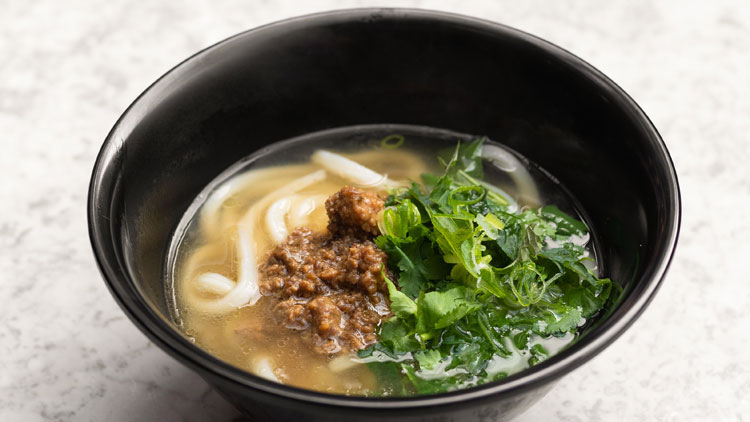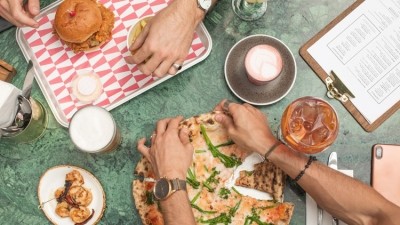John Devitt: "I’d love to do a Koya outside London - that would be a good experiment"

What was your inspiration behind Koya?
When we opened in Soho, there wasn’t even a singularly minded ramen joint. I just wanted the best noodles, the best broth, the best dish. It wasn’t about making money – it was more ideological. I wanted people to come and get what we were doing. A lot of people didn’t at the beginning. But when the Japanese tourists showed up it was like, ‘wow, this is incredible’.
How are things different at Victoria Market Halls?
Here, the menu has been pared back even further – and it’s really to make it more accessible. When you look at other operators in Victoria, their menus are easier to understand. I had to take away Japanese words like atsu-atsu (hot broth, hot noodles) and hiyashi (cold noodles, cold pouring sauce) because people don’t understand them. In a restaurant you can explain, but when people are walking around looking at different stalls it needs to be more immediate. We’ve taken cold noodles off the menu for the time being, and when the weather gets warmer and people know more about what we do, we will put them back on. We’re finding that once customers have been in a few times they start experimenting with different stalls.
Why did you focus on udon rather than the more trendy ramen?
It’s true that udon is lesser known than ramen. If you look at New York, it’s riddled with very good ramen restaurants but no udon restaurants of note. In Japan, udon only started picking up as a popular option in the year 2000. There were different versions around the country then, in just four or five years, something like 1,000 opened in Tokyo. There are now two or three chains that have 100 to 200 outlets. I like udon because it’s flexible and healthy. Ramen is a bit more one dimensional, with most restaurants focusing on one style. Most ramen in this country is based around pork fat, which is very tasty but not very healthy, whereas with udon you have a dashi broth, which is a lot healthier.
How do the finances of running a restaurant compare to running a stall at a food hall?
The stall at Victoria cost a 15th of the price of our City opening. With minimal investment you can almost make the same kind of money here that you would investing a huge amount of money in your own restaurant. There’s an awful lot to be said for places like this. It’s win-win for everyone – it’s cheaper for restaurateurs, it’s cheaper for customers to eat who don’t feel obliged to have an expensive bottle of wine. People can order different things from different traders. It’s just an easier way to dine out.
Will you do more sites like this?
Definitely. And possibly with Market Halls. I’d love to do one outside London at some stage, that would be a really good experiment.
How else do you plan to develop the business?
Shuko [Oda, head chef and co-founder] wanted a stand-up section at the back, like they have in Japan. You stand at the bar, eat then off you go to catch a train. I’d love to do that in the future. Our food experimentation is off the main menu with the specials. We have vegan dishes. Our chef in Soho loves Japan and is doing different dishes for different days of the week like they do in January in Japan to encourage people to eat more vegetables. We don’t have a central kitchen and we cook all the broths in each restaurant – it has to be fresh. But we make noodles in one place. We’re hoping to open another site soon so there’s a huge attraction to having a central noodle factory and we could then start doing certain things and start sending it out.
How has your previous life as a City trader informed your approach?
I think Jyotin [Sethi] from JKS Restaurants is a great example of how experience in the City can really help – it’s not emotional; it’s matter of fact, financial based. That’s how I operate. You have to follow the numbers – and I’m very good at it. Having been a trader for eight years, I went to every fancy restaurant in London. My mother will confirm that I’d come home and say ‘I’m so bored of all this fancy food’ – and she would say, ‘you spoilt brat!’ I’d been to them all, and I just didn’t want to do the high-end fancy stuff. I wanted to create something you could go to every day – so that’s what I did.
How is your City site in Bloomberg Arcade faring?
We are so insanely busy for two hours we have to take the specials board away and focus on feeding as many people as possible in that window. The blackboard slows the whole thing down. With seating outside, there’s space for 70 people. We still have the same small back of house as Soho for sending food out and it just wasn’t possible. Overall trading at Bloomberg has been fair. People are beginning to understand what we do. It’s an imposing building, and the arcade can feel a bit soulless outside of busy hours – you can miss it. In the next 12 months, you’ll start to feel its presence more. I think we will also see a drive to get more people into the City at weekends.
Generation Next is a newly-formed club for the rising stars in the hospitality sector. The next event takes place in London on 6 March. For more information on how to join Generation Next and attend its events click here



















